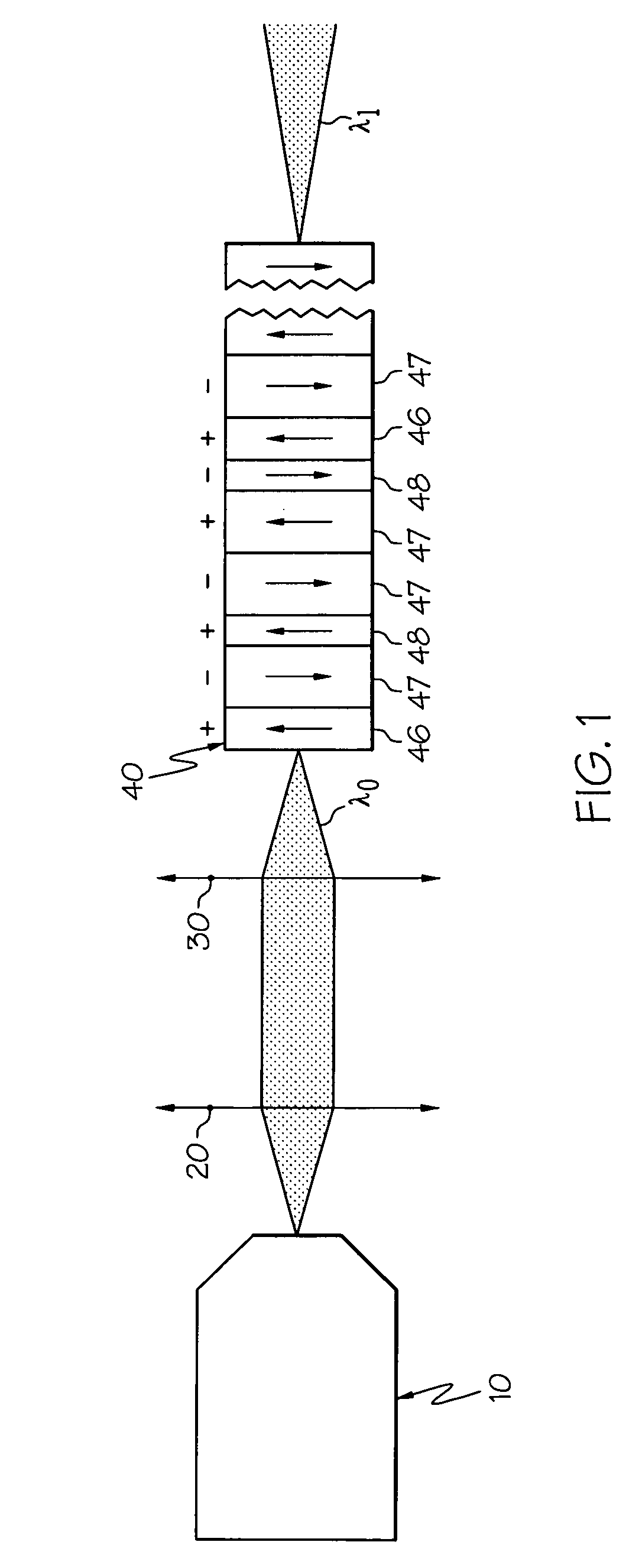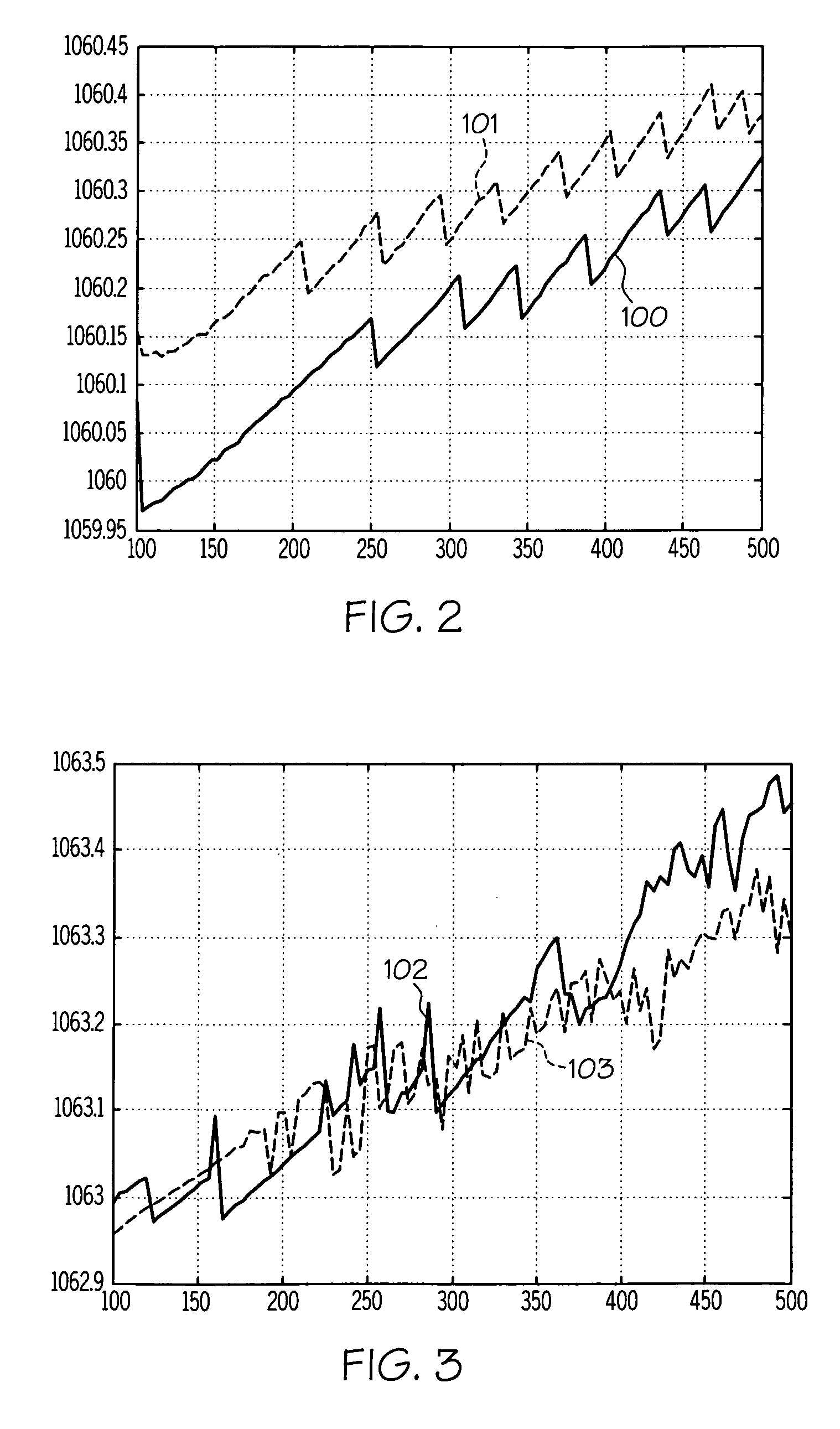Wavelength conversion devices and fabrication methods for the same
a technology of wavelength conversion and fabrication method, which is applied in the direction of instruments, light demodulation, optics, etc., can solve the problems of significant drop in emitted power and adversely affect the stability of the laser, and achieve the effects of reducing back reflection, increasing laser stability, and dropping emitted power
- Summary
- Abstract
- Description
- Claims
- Application Information
AI Technical Summary
Benefits of technology
Problems solved by technology
Method used
Image
Examples
Embodiment Construction
[0014]The present invention relates generally to semiconductor lasers and wavelength conversion devices, such as second harmonic generation crystals (SHG), which may be configured in a variety of ways. For example and by way of illustration, not limitation, short wavelength sources can be configured for high-speed modulation by combining a single-wavelength semiconductor laser, such as a distributed feedback (DFB) laser, a distributed Bragg reflector (DBR) laser, a vertical cavity surface-emitting laser (VCSEL), a vertical external cavity surface-emitting laser (VECSEL) or a Fabry-Perot laser with a light wavelength conversion device, such as an SHG crystal.
[0015]As will be appreciated by those familiar with laser design, DFB lasers are resonant-cavity lasers using grids or similar structures etched into the semiconductor material as a reflective medium. DBR lasers are lasers in which the etched Bragg grating is physically separated from the electronic pumping area of the semiconduc...
PUM
 Login to View More
Login to View More Abstract
Description
Claims
Application Information
 Login to View More
Login to View More - R&D
- Intellectual Property
- Life Sciences
- Materials
- Tech Scout
- Unparalleled Data Quality
- Higher Quality Content
- 60% Fewer Hallucinations
Browse by: Latest US Patents, China's latest patents, Technical Efficacy Thesaurus, Application Domain, Technology Topic, Popular Technical Reports.
© 2025 PatSnap. All rights reserved.Legal|Privacy policy|Modern Slavery Act Transparency Statement|Sitemap|About US| Contact US: help@patsnap.com



